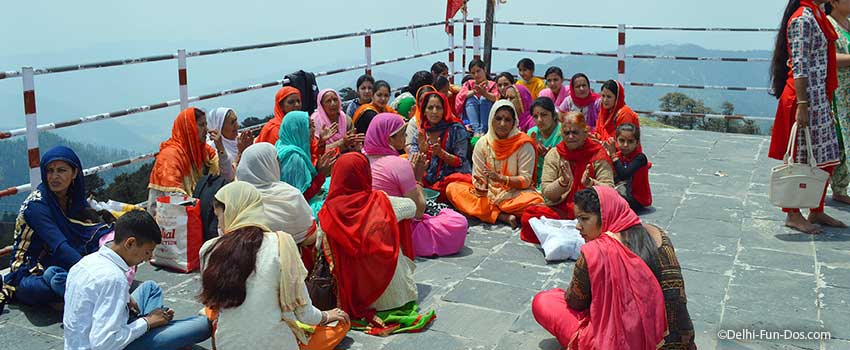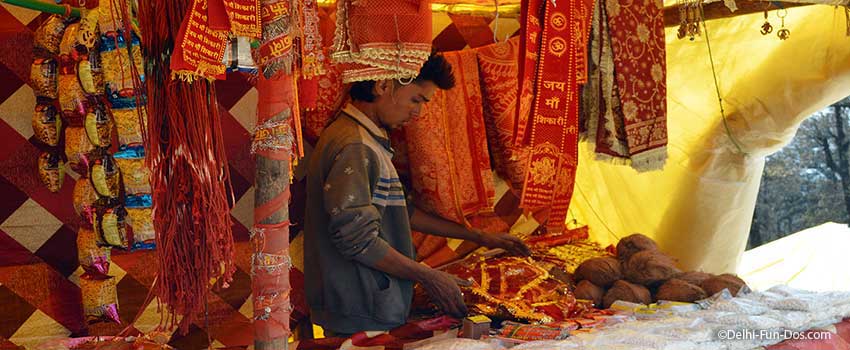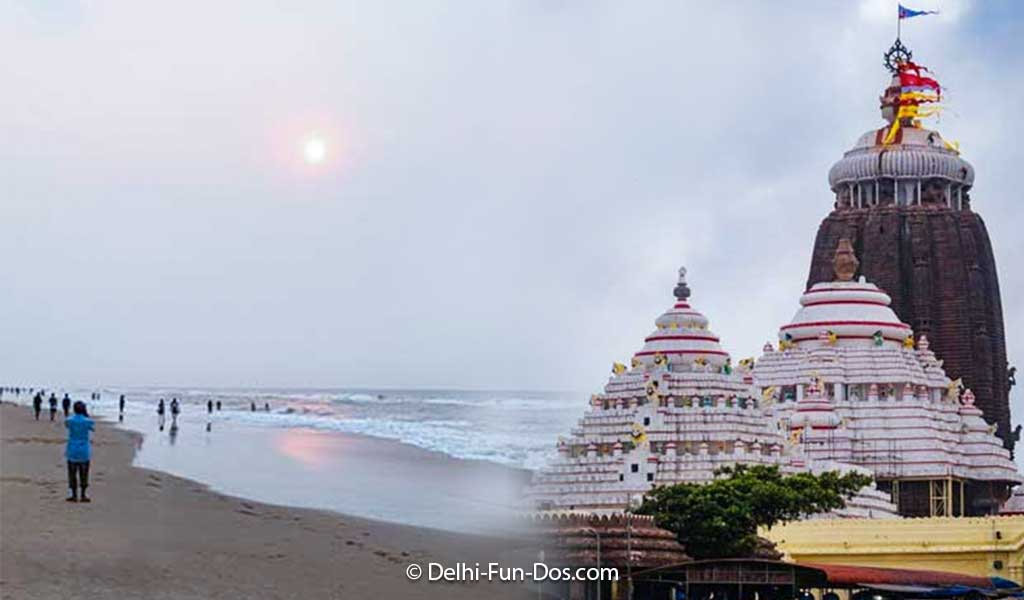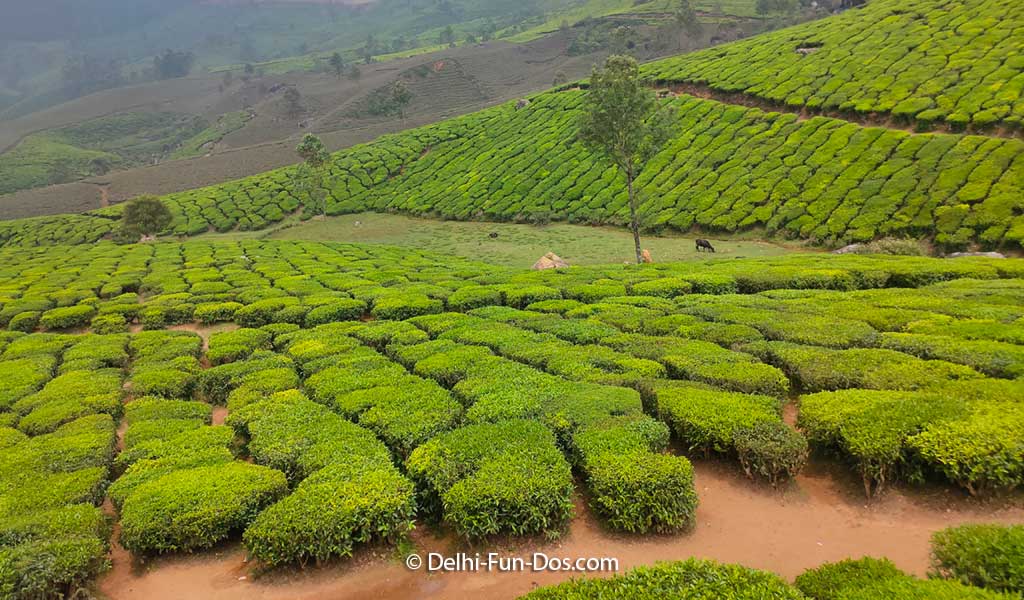The second part of the Gregorian calendar is a prolonged festival season all across the world. Come September, we hop from one festival to another in India. And sometimes, the same festival is celebrated in different ways in different parts of the country. The upcoming Durga Puja in Kolkata and Navratri in Delhi are apt example.
Both the festivals celebrate the Mother Goddess of Hinduism – Durga – albeit in diverse forms. In Eastern India – West Bengal, Orissa, Bihar and Assam it is time for Durga Puja while up north it is Navratri or the Nine Nights of Divinity. In one form of the festival people feast to glory while in the other, people fast, the height of indulgence being the Vrat ki Thali.

Are there any similarities between Navratri and Durga Puja? Well, prima facie, yes. Both the festivals are in ode to the Mother Goddess. Hindus pray to Shakti or Divine Feminine Power in this period. Worshipping the Kanjak or Kanya Pujan is a manifestation of this belief. Further, both festivals are celebrated during the first day and the tenth day of the lunar phase in autumn. In fact, there are two Navratris that are celebrated in a year – once in spring and again in autumn. In Bengal, Goddess Durga was worshipped in spring as well and this was called Basanti Puja. She was again worshipped in autumn to commemorate Sri Ram’s worship of Durga in this season. But this worship was not widespread. Over time, the autumn worship of Durga became more popular mainly due to social reasons and is has taken the present form of Durga Puja. Most importantly, both Navratri and Durga Puja make the same statement – the victory of good over evil.

This situation behooves the question – how are Navratri and Durga Puja different? Without going into the scriptures, purely based on practices, below is a comparison between these autumnal festivals.
- Navratri is more observance and austerity while Durga Puja is about celebration and merriment. This perhaps is the fundamental difference between these two festivals. The differences in the manifestation of these two festivals emanate from this fundamental variation in approach.
- Navratri is a personal or family observance. Except for community Garba in Gujarat, Navratri does not have much public manifestation. Till recent times the strict dietary protocol was a home affair during Navratri. In recent times, there has been some relaxation in cities where Navratri compatible food such as Vrat Snacks and Vrat ki Thali are available at restaurants. On the contrary Durga Puja, in its commonest form, is a public festival. Barring the rare households organising family Durga Puja, it is mostly a community celebration where people from a locality would come together and organise a community Puja. Arranging a 5 days long Durga Puja is an expensive and strenuous affair. Therefore, the community format of Durga Puja has gained popularity all across the country.
- Worshipping the Kanjak or Kanya Pujan is an integral part of the North Indian version of Navaratri. An odd number of little girls who are yet to reach adolescence are invited home on Ashtami or Navami, worshipped, and given kanjak gifts. This is a household affair in North India. There is no such household practice during Durga Puja. The closest is the practice of Kumari Puja when a little girl, decked in a bright sari, ornaments, and flower chaplet, is worshipped in front of the Durga idol on Ashtami.
- Navratri starts on the first day of full moon phase of the fortnight and continues for next nine days till Navami. Durga Puja rituals start on the sixth day of this fortnight or Shashti and continue till the tenth day or Dashami.
- The nine days of Navaratra are dedicated to the nine avatars of Goddess Durga – Shailaputri, Brahmacharini, Chandraghanta, Kushmanda, Skanda Mata, Katyayani, Kalaratri, Mahagauri, Shiddhidatri. During Durga Puja, the reigning deity is Goddess Durga. In its popular iconography in Eastern Indian states, the Durga idol is perched on her vehicle the lion and Buffalo Demon King Mahishashura. She is mostly accompanied by her children Goddesses Lakshmi and Saraswati and Gods Ganesh and Kartik.
- Durga Puja in Bengal has a touching regional story. Durga is considered to be the daughter of a Bengali household. The Divine Daughter spends the year in hardship with her husband Lord Shiva in her marital home on the Kailasha Mountain. Durga, accompanied by her children Lakshmi, Saraswati, Ganesh, and Kartik, comes back to her parents’ place every year for four days in autumn. The Durga idol worshipped in Eastern India, therefore, has Lakshmi, Saraswati, Ganesh, and Kartik idols also on the altar. Durga and her children’s annual homecoming is celebrated by Bengalis as Durga Puja. The best of food and gifts are offered to Durga in this phase since it is thought she spends the rest of the year in penury with the Divine Vagabond Lord Shiva. Thus Durga Puja is a celebration marking the return of the married daughter to her parent’s place only once a year. In fact, this story can be identified by many households whose daughters have moved afar after marriage and the parents long to meet her and her children.

Navratri in North India is a different story altogether. It is purely prayers to the Divine Mother from a piety approach. Navratri focuses on the victory of good over evil. Thus Navratri is more of a period of austerity and prayers. People frequently visit temples and make simple offerings of fried bread or Puri – Chholay (black chickpea) – Halwa (sweets) to the Goddess on the culmination of Navrati. Post offering this fare is also consumed by devotees as prasad.
- Navratri comes with a host of dietary restrictions. Hindus up north stick to vegetarian food and fasting is common in this phase. Of late, however, special Navratri food like Vrat snacks and Vrat ki Thali are available at restaurants. However, Durga Puja is a time to feast. Hence there is not much dietary restriction in the communities of Eastern states. In fact, fish and red meat are offered to the Goddess in some households. That said, some Bengali families also adhere to Navratri tradition during Durga Puja and refrain from consuming non-vegetarian food.
- Navratri involves the worship of the many Avatars of Goddess Durga. However, the Demon King Mahishashura is worshipped along with Goddess Durga during Puja only in Eastern states. As per scriptures, Mahishashur was born to Demon King Rambhashur on a boon from Lord Shiva. The Lord had promised Rambhashur to be born as his son. Hence, Mahishashur is considered to be an avatar of Lord Shiva and is also worshipped during Durga Puja.
- The day after Navmi (The last day of navratri) comes the festival of Dusshera in North India. Post the austerity of Navratri, people make merry during Dusshera. To mark the victory of Shri Ram over Ravana, his effigies are set on fire in public areas. This signifies the cleansing of evil and the victory of good. On the other hand, Dusshera is celebrated as Vijaya Dashami among Bengalis. Durga idols that were worshipped during Durga Puja are immersed in the Ganges or local water bodies on Dashami or the tenth day. This is to signify the return journey of Goddess Durga and her children to her marital home on Mountain Kailash for the next year. Thereafter Bengalis embrace and greet and exchange sweets wishing each other well till the next Durga Puja.

Needless to say, both festivals have beautiful expressions. In fact, the variety of Indian festivals brings more colours to our social canvas. We at Delhi-Fun-Dos are very fortunate to have got opportunities to enjoy and cover both Navratri and Durga Puja; Navratri in Delhi as well as Durga Puja in Kolkata. Here is wishing all our readers a happy and safe festival season 2019.




Well written. …Please throw some light on how the inhabitants below Narmada celebrate Navratri
Autumnal Navratri, as you are aware, we are partial to Kolkata. So, to confess, we are yet to experience Navratri in Central or Southern India. As and when that opportunity arises, we shall create a post and dedicate that especially to you 🙂
Indian festivals are so colourful and also full of deeper meaning and are such an integral part of Indian culture. Navratri and Durga Puja are of course iconic. We have not been fortunate to witness Durga Puja in Kolkata though we have done our bit of pandal hopping in Bangalore. Having stayed in Gujarat, we have really enjoyed Navratri for many years.
As a bengali Durga Puja is a part of my culture, its an emotion, a feeling which is not described as a festival but a pure joy of celebration our own integrity.
Durga Puja strikes a chord with non-Bengalis too.
Nicely written an informative piece. I especially liked the part where Ma Parvati homecoming to her parent’s home, is compared to a regular daughter’s visiting their parent’s place, once a year. On the daughter’s return, she is also loaded with gifts. These gestures are symbolic but hold such deep meanings.
That was such a detailed explanation of this important festival.
Such information is what we lack nowadays and this post is a definite source of knowledge.
I am from Kolkata and Durga Puja is the biggest festival here… Last year, I was going around pandel hopping from Chaturthi… But this year, sadly gotta stay at home!
Rightly said – September onwards India moves from festival to festival and its a treat for eyes as well as for foodies. Being In Delhi, its a blessing to be able to enjoy all the festivals.
Since I am not a religious person, this post is a good observation of the differences. Essentially, the method of connecting to the divine could be any, but goal remains the same.
I had visited Kolkata during durga puja and I know how amazing the celebrations are. It’s good to know the differences between Navratri and durga puja. I had no idea about them.
It is surprising how this festival is celebrated in most regions of India
This is such an informative write up our loved festivals. Loved reading it.
Glad you liked it 🙂
Durgapuja and Navratri both are iconic and have deeper meaning in it. I loved enjoying both the festivals and the way different parts of the India Celebrate the festival, just incredible
Yes, this is a common festival binding all corners of the country.